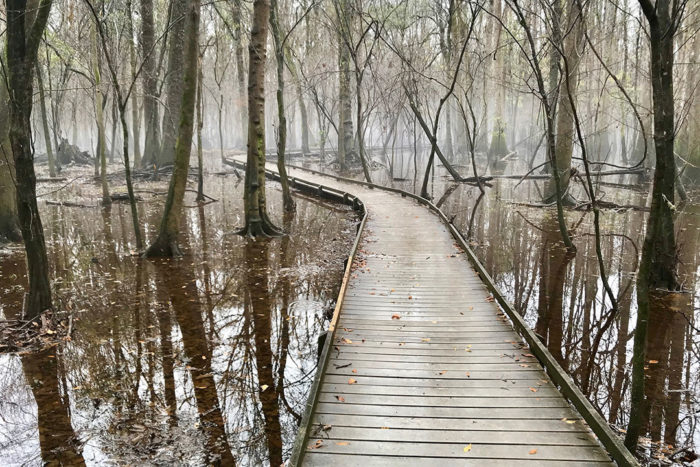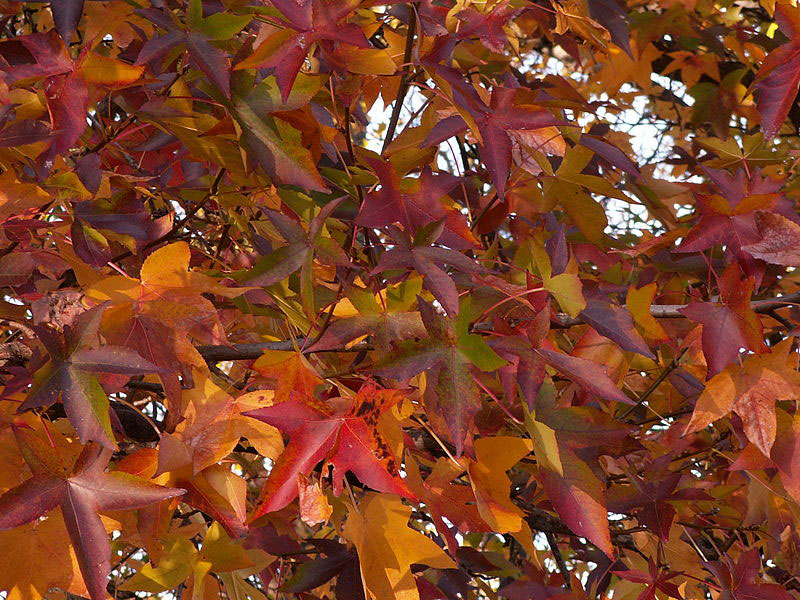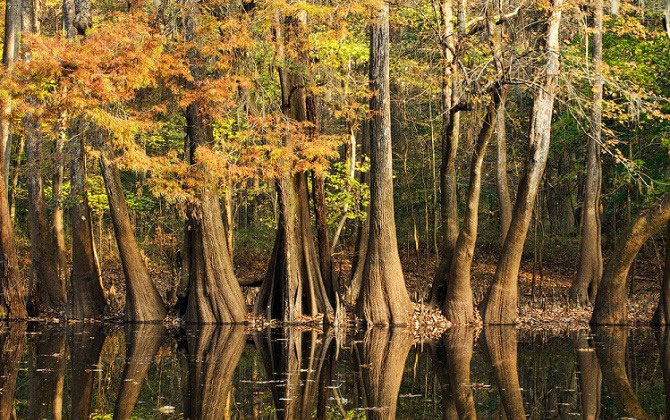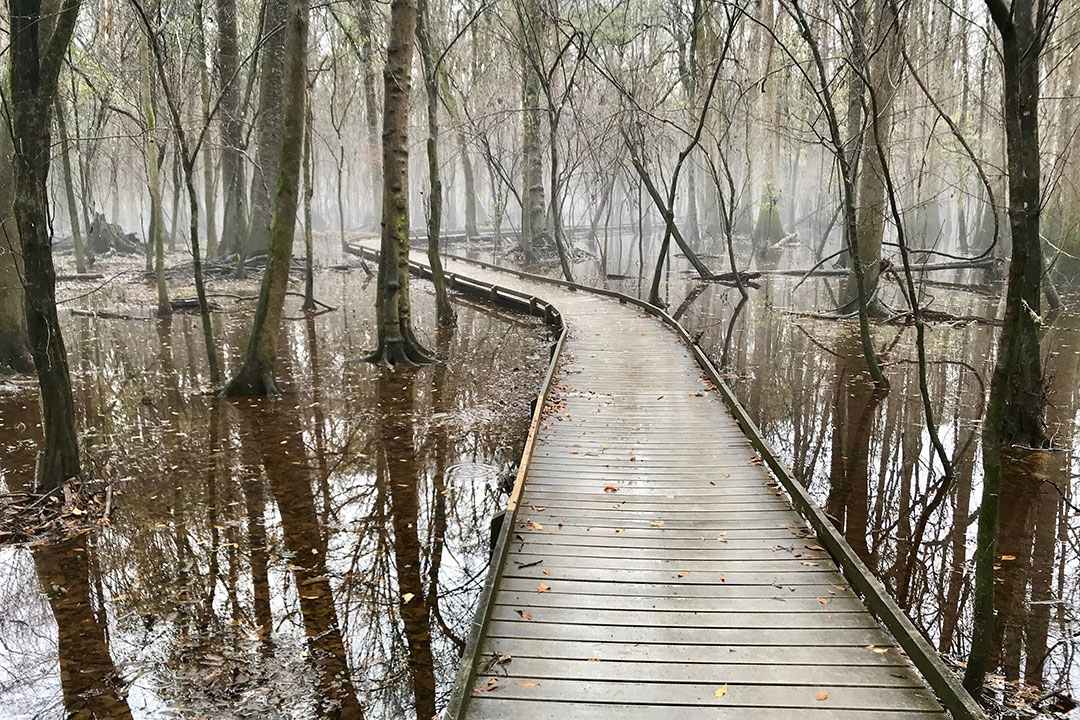
Thirty minutes from Columbia, South Carolina—and not that far out of the way for anyone traveling to the beach on the Atlantic Coast—Congaree National Park is waiting to be explored. Many people have not heard of this national park, which didn’t receive its status until 2003.
Congaree has a lot going for it: a 26,000-acre forest that’s an International Biosphere Reserve, a Globally Important Bird Area, and a National Natural Landmark. Additionally, approximately 17,000 acres of the park are designated as official Wilderness Area.
Giants of the Southeast

For those who love big trees, this is one of the best places to see them in the South. Congaree holds the largest intact expanse of old-growth bottomland hardwood forest remaining in the Southeastern United States. Much of this habitat was lost to the axe after the Civil War. The geography of this swampland paired with unsuccessful attempts to turn these floodplains into farmland led to its preservation.
There is no greater concentration of champion trees than those in Congaree. A champion tree is the largest-known example of a species in the country. Some 25 champion trees are known to exist in the park. Included in this list is bald cypress (Taxodium distichum, Zones 4–9), laurel oak (Quercus laurifolia, Zones 7–9), loblolly pine (Pinus taeda, Zones 6–9), and sweetgum (Liquidambar styraciflua, Zones 5–9).
When to Visit

Congaree is located in a humid subtropical climate; the park experiences mostly mild winters and warm, wet summers. Winter visits can be some of the most pleasant because of mild temperatures. However, seasonal flooding can restrict access to much of the park. March through May, visitors will experience mild temperatures with lower insect activity, making this one of the best times of year to visit. High summer weather is about what you would expect, with drier conditions but more heat. This is when there are many more mosquitoes. If you enjoy canoeing, perfect water levels, mild temperatures, and peak fall colors, visit toward the end of October.
Bring Home What You Learn

The National Park Service has 62 sites that include “National Park” as part of their name. Congaree is one of the most unique. A 2.4-mile boardwalk allows visitors of almost any fitness level or ability to immerse themselves in an ecosystem that would be hard to access otherwise. Seasonality, the movement of water, and the impact of time are all evident during a visit. Many of the trees you will see in this vast forest are ones you may have planted in your own backyard. Careful observers will find in this landscape knowledge that will help them understand their own surroundings at a deeper level.
—Andy Pulte is a faculty member in the plant sciences department at the University of Tennessee.
Fine Gardening Recommended Products

The Nature of Oaks: The Rich Ecology of Our Most Essential Native Trees
Fine Gardening receives a commission for items purchased through links on this site, including Amazon Associates and other affiliate advertising programs.

DeWalt Variable-Speed Cordless Reciprocating Saw
Fine Gardening receives a commission for items purchased through links on this site, including Amazon Associates and other affiliate advertising programs.
- 18.31 x 6.13 x 4 inches
- 1-1/8-inch stroke length
- Variable speed trigger with 0-3000 spm

DeWalt Variable-Speed Cordless Reciprocating Saw with 6-Piece Saw Blade Set
Fine Gardening receives a commission for items purchased through links on this site, including Amazon Associates and other affiliate advertising programs.
- 18.31 x 6.13 x 4 inches
- 1-1/8-inch stroke length
- Variable speed trigger with 0-3000 spm
- DW4856 Metal/Woodcutting Reciprocating Saw Blade Set, 6-Piece



















Comments
Log in or create an account to post a comment.
Sign up Log in